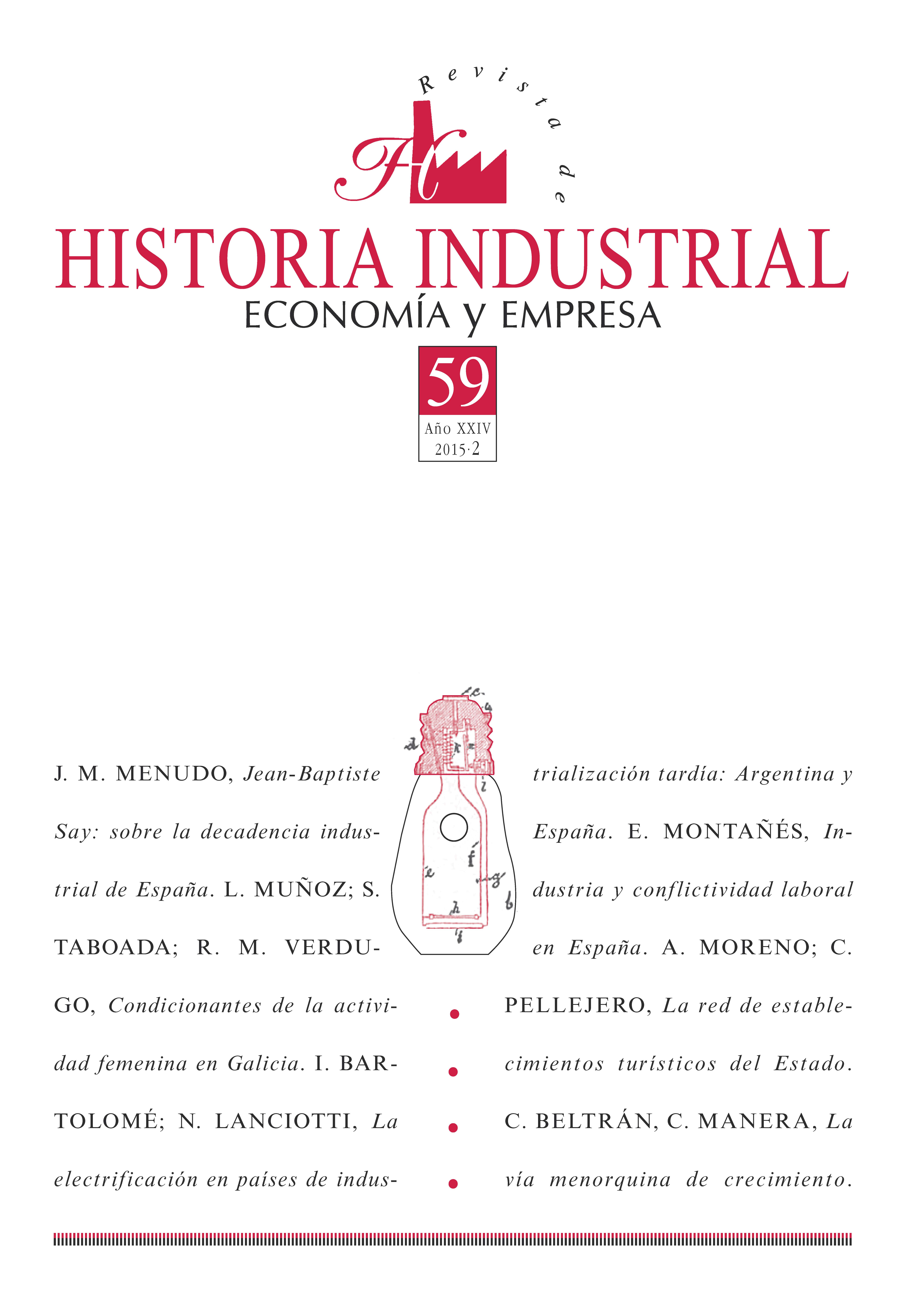The State-owned Tourist Establishments Network (1928-1977), need for hotels or tourism policy?
Article Sidebar

Main Article Content
Ana Moreno Garrido
Carmelo Pellejero Martínez
During Franco’s regime, Spain’s state network of hotels founded in 1928, Paradores, entered a new era. Prior to this, it was a small heterogeneous collection of hotels not located in developed tourist areas. From the 1950s onward, Paradores became an important instrument of tourism policy beyond the duty of offering beds in a country with an underdeveloped hotel industry. It was charged with controlling official hotel prices, improving the tourism sector and, from a specific moment, helping in the preservation of Spain’s cultural heritage. Thus, its development and transformation represent not only a business history but also what Franco’s regime meant by tourism and touristic development. The incredible increase in the size of the network, which grew by 65 hotels between 1940-1977, along with its ambitious architectural and territorial policy made the State one of the largest hotel businesses in Spain. This created a paradox in a country where the regime didn’t know how to (or couldn’t) resolve the problems of the national hotel industry. Beyond the numbers, in this article we look at whether or not Paradores fulfilled its objectives and the role it played in the structure of Spanish tourism, without forgetting, of course, its questioned economic profitability.
Keywords
History, Tourism, Franco Regime, Paradores
Article Details
How to Cite
Moreno Garrido, Ana; and Pellejero Martínez, Carmelo. “The State-owned Tourist Establishments Network (1928-1977), need for hotels or tourism policy?”. Revista de Historia Industrial, no. 59, pp. 147-78, https://raco.cat/index.php/HistoriaIndustrial/article/view/297682.
Most read articles by the same author(s)
- Carmelo Pellejero Martínez, Tourism and Economy in Twentieh-century Málaga , Revista de Historia Industrial: 2005: Núm.: 29
- Carmelo Pellejero Martínez, Moreno Garrido, Ana, Historia del Turismo en España en el siglo XX. Madrid, Síntesis, 2007, 333 pp. , Revista de Historia Industrial: 2007: Núm.: 35
- Carmelo Pellejero Martínez, Luis Alonso Álvarez, Margarita Vilar Rodríguez y Elvira Lindoso Tato, El agua bienhechora. El turismo termal en España, 1700- 1936, Observatorio Nacional del Termalismo, Alhama de Granada, 2012, 207 pp. , Revista de Historia Industrial: 2014: Núm.: 54